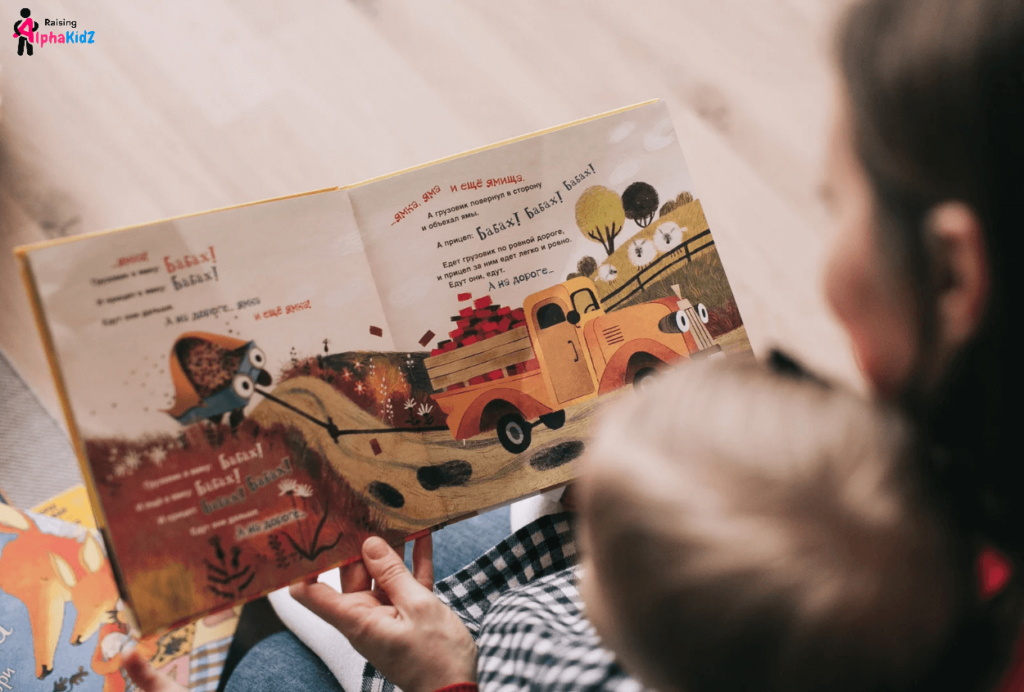Children are made readers on the laps of their parents, and storytelling is a magical tool that engages their imaginations and fosters a deeper connection to the world outside. From ancient days, stories are best tool to engage the children and it holds the power to delight, enchant, touch, teach, inspire, and challenge the kids. As parents, we hold the key to unlocking this power and shaping our children’s lives through the art of storytelling. Mastering The Art Of Storytelling can help you to incorporate more knowledge, imagination and curiosity in kids, that helps to engage their time in more productive and useful way.
Rita Pierson
“Every child deserves a champion—an adult who will never give up on them, who understands the power of connection and insists that they become the best that they can possibly be.”
Things to consider while telling stories to kids
- Narrative structure
- Parential Connection
- Asking Questions
- Delivering with Voice Modulations
- Ending with Morals
The Narrative Structure:
When telling stories to kids, following a well-structured narrative is essential. Begin with a captivating introduction, drawing them into a world of imagination. Introduce relatable characters and a problem to be solved. This sets the stage for an engaging journey into the story world.
As the story progresses, weave a tapestry of rising action, leading to a climactic turning point. Capture their attention with descriptive language, engaging dialogue, and sensory details. Create suspense, humor, and surprise to keep them hooked while unveiling the suspensive plot.
In the falling action, gradually wind down the intensity, providing closure to subplots and secondary characters. Finally, reach a satisfying resolution that delivers a clear moral or lesson, leaving a lasting impact on growing young minds.
Improving Vocabulary
Storytelling is a powerful tool for improving children’s vocabulary. Through storytelling, children are exposed to a wide range of words and phrases, expanding their vocabulary. The contextual nature of storytelling helps children understand and retain new vocabulary more effectively. Repetition within stories reinforces their grasp of words, while the use of descriptive language and figurative expressions expands their language skills. Active engagement in the storytelling process, such as participating in discussions and asking questions, deepens their understanding of words and encourages their usage. Incorporating vocabulary-based games and activities makes learning interactive and enjoyable. Follow-up conversations about the story further reinforce vocabulary learning and encourage children to use new words in their own discussions. By embracing storytelling as a means of learning, parents and educators can provide children with an engaging and effective way to enhance their vocabulary and develop stronger language skills.

The Parental Connection:
It’s not only children who grow. Parents do too. As much as we watch to see what our children do with their lives, they are watching us to see what we do with ours. I can’t tell my children to reach for the sun. All I can do is reach for it, myself.
As parents, we have the extraordinary opportunity to be the storytellers who shape our children’s experiences. We are the champions, the guides who nurture their growth and understanding of the world.
Through storytelling, we create precious moments of connection. We engage our children in an interactive dialogue, discussing the story’s themes, asking open-ended questions, and inviting them to share their thoughts and interpretations.

Asking Questions
Engaging children with open-ended questions while telling stories is essential technique that enhance the storytelling experience. Here’s why they are important:
Open-ended questions encourage active participation and critical thinking. By asking questions that require more than a simple “yes” or “no” answer, we stimulate children’s imagination and encourage them to reflect on the story. This engagement fosters deeper comprehension, encourages them to share their thoughts and opinions, and promotes conversation and communication skills.
Delivering with Voice Modulations & Pretend Play
Voice modulation and Pretend Playing brings stories to life by using different tones, pitches, and gestures. By varying our voice to match the characters, settings, and emotions in the story, we captivate children’s attention and create a more immersive experience. Actions helps to convey the mood, build suspense, and evoke emotions, making the story more engaging and memorable.

End with Morals:
Stories are a powerful tool for teaching morals and values to children. Incorporating morals within the storytelling process helps convey important life lessons and values that they try to incorporate in real life. Stories provide opportunities to explore ethical dilemmas, consequences of actions, and positive character traits. By highlighting morals within the story, we encourage children to reflect on the choices made by characters and draw connections to their own lives. This promotes empathy, moral development, and critical thinking.
Stories have the power to transform. Mastering The Art Of Storytelling can ignite imaginations, teach valuable lessons, and instill empathy and resilience in kids. As parents, we hold the key to unlocking this power through engaging storytelling.
So, let us embrace the art of storytelling, nurturing our children’s imaginations, and fostering a deeper connection. Through the gift of storytelling, we can inspire, teach, and create treasured memories that will last a lifetime.

